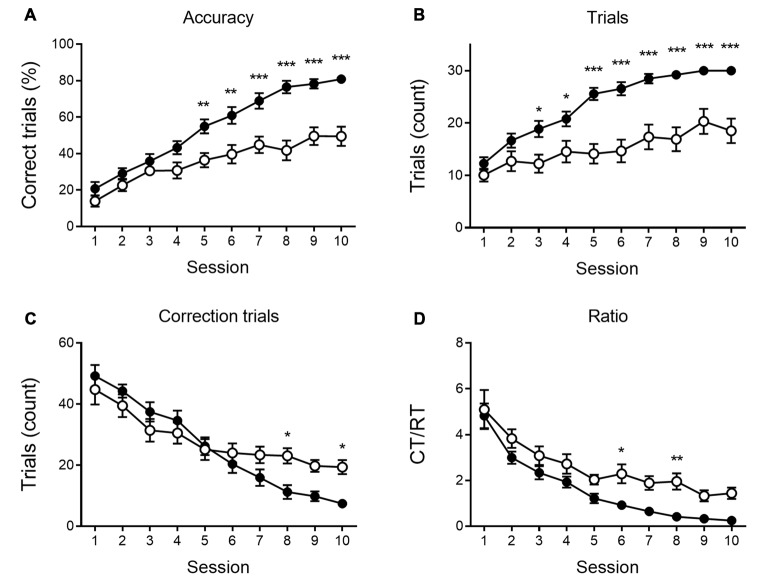Figure 3.
Reversal learning performance at 6 months of age. Reversal learning deficit in APPPS1-21 (white symbols) compared to wild type controls (black symbols). While both genotypes showed a steep increase in accuracy of performance over sessions (A), APPPPS1–21 were less successful. A difference in performance became apparent after 4 test days when APPPS1-21 mice started lagging behind (significant interaction between sessions and genotype, see text for details). The number of regular trials (RTs) per session showed a significant increase over sessions (B). Starting from session 3, however, transgenic animals perform fewer RTs. The number of CTs decreases significantly over sessions as animals learn the reversed reward contingency (C). Starting from reversal day 7, transgenic animals perform significantly more CTs, indicating their greater difficulty abandoning the previously learned reward contingency. The CT/RT ratio decreased significantly over sessions in both groups (D). Data plotted as mean ± SEM, *p < 0.05, **p < 0.01, ***p < 0.001 (Bonferroni post hoc test, APPPS1-21 vs. wild type controls).

